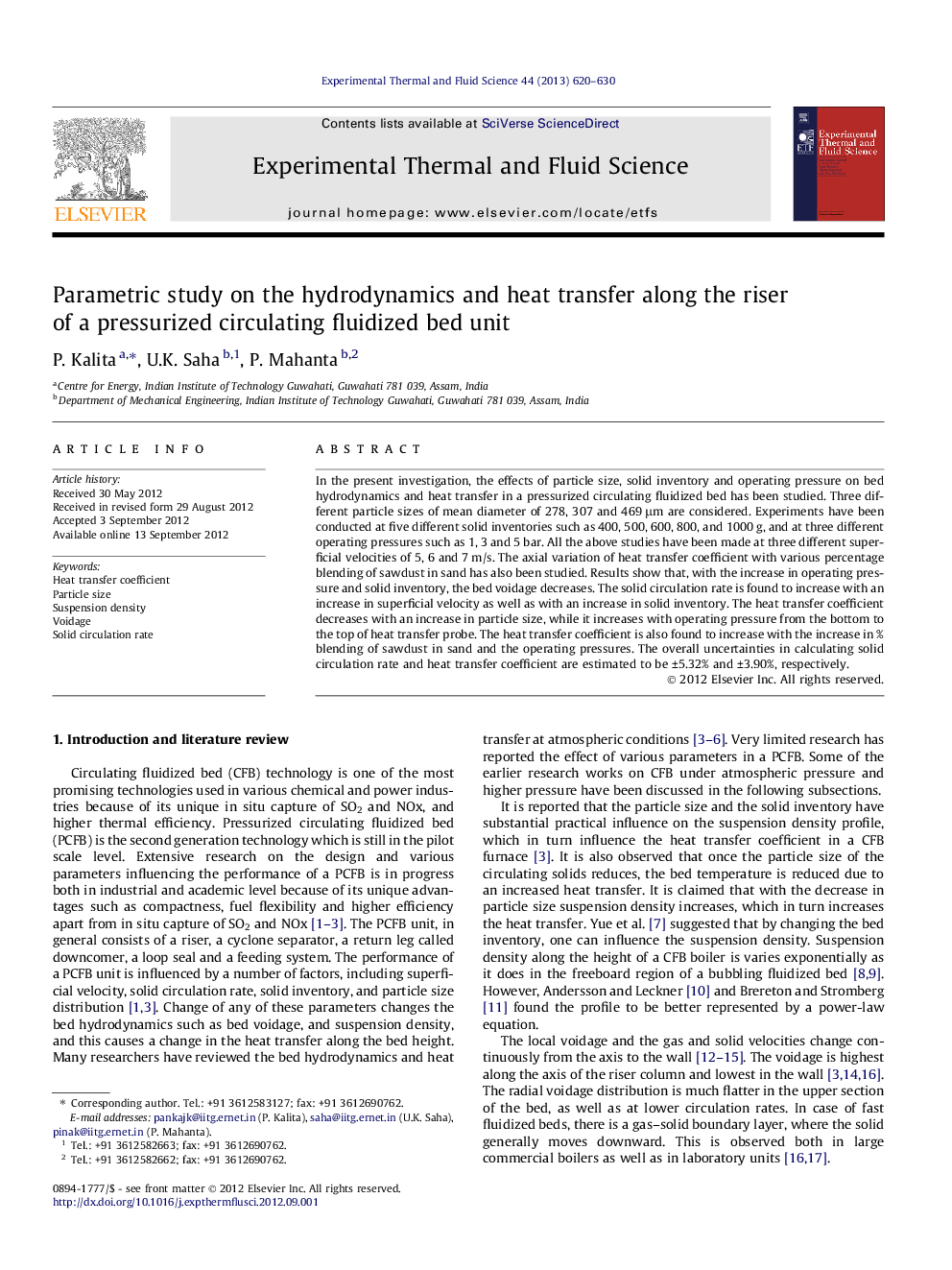| Article ID | Journal | Published Year | Pages | File Type |
|---|---|---|---|---|
| 651551 | Experimental Thermal and Fluid Science | 2013 | 11 Pages |
In the present investigation, the effects of particle size, solid inventory and operating pressure on bed hydrodynamics and heat transfer in a pressurized circulating fluidized bed has been studied. Three different particle sizes of mean diameter of 278, 307 and 469 μm are considered. Experiments have been conducted at five different solid inventories such as 400, 500, 600, 800, and 1000 g, and at three different operating pressures such as 1, 3 and 5 bar. All the above studies have been made at three different superficial velocities of 5, 6 and 7 m/s. The axial variation of heat transfer coefficient with various percentage blending of sawdust in sand has also been studied. Results show that, with the increase in operating pressure and solid inventory, the bed voidage decreases. The solid circulation rate is found to increase with an increase in superficial velocity as well as with an increase in solid inventory. The heat transfer coefficient decreases with an increase in particle size, while it increases with operating pressure from the bottom to the top of heat transfer probe. The heat transfer coefficient is also found to increase with the increase in % blending of sawdust in sand and the operating pressures. The overall uncertainties in calculating solid circulation rate and heat transfer coefficient are estimated to be ±5.32% and ±3.90%, respectively.
► The suspension density increases with an increase in operating pressure. ► The heat transfer coefficient increases with an increase in operating pressure. ► The heat transfer coefficient increases with an increase in superficial velocity. ► The heat transfer coefficient decreases with the increase in particle size. ► 7.5–15% Sawdust blend is found to be best to get higher heat transfer coefficient.
